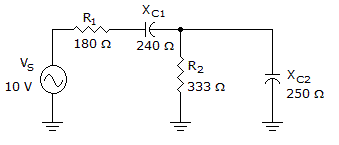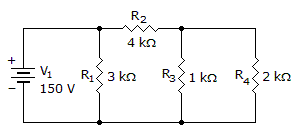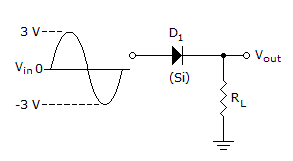Discussion
Home ‣ Electronics ‣ Measurement, Conversion and Control See What Others Are Saying!
- Question
The connections to a thermocouple
Options- A. can produce an unwanted thermocouple effect, which must be compensated for
- B. produce an extra desirable thermocouple effect
- C. must be protected, since high voltages are present
- D. produce an extra desirable thermocouple effect and must be protected, since high voltages are present
- Correct Answer
- can produce an unwanted thermocouple effect, which must be compensated for
- 1.

What is the current through XC1 in the given circuit?
Options- A. 32.2 mA
- B. 16 mA
- C. 12 mA
- D. 48 mA Discuss
- 2. The total power is 10 watts.

Options- A. True
- B. False Discuss
- 3.

The peak inverse voltage (PIV) for the diode in the give circuit equals ___.
Options- A. 3 V
- B. 2.3 V
- C. 0 V
- D. 6 V Discuss
- 4. If one branch shorts out in a parallel circuit, the other branches are not affected.
Options- A. True
- B. False Discuss
- 5. What is the waveform period of a square wave signal that horizontally covers 3 major divisions per cycle? (time/cm = 50 ms)
Options- A. 50 ms
- B. 100 ms
- C. 150 ms
- D. 200 ms Discuss
- 6. If an op-amp has one input grounded and the other input has a signal feed to it, then it is operating as what?
Options- A. Common-mode
- B. Single-ended
- C. Double-ended
- D. Noninverting mode Discuss
- 7. A binary number's value changes most drastically when the ____ is changed.
Options- A. LSB
- B. duty cycle
- C. MSB
- D. frequency Discuss
- 8. An S-R flip-flop can be triggered by ______, ______, or ________.
Options- A. HIGHs, LOWs, PRESETs
- B. edges, levels, pulses
- C. HIGHs, LOWs, CLEARs
- D. SETs, RESETs, HIGHs Discuss
- 9. A single-phase induction motor
Options- A. is self-starting
- B. operates at a fixed speed
- C. is less reliable than a three-phase synchronous motor
- D. none of the above Discuss
- 10. Series resonance happens when _____.
Options- A. XC = XC
- B. XL = XC
- C. XL = XB
- D. XT = R Discuss
More questions
Correct Answer: 32.2 mA
Correct Answer: False
Correct Answer: 3 V
Correct Answer: False
Correct Answer: 150 ms
Correct Answer: Single-ended
Correct Answer: MSB
Correct Answer: edges, levels, pulses
Correct Answer: none of the above
Correct Answer: XL = XC
Comments
There are no comments.More in Electronics:
Programming
Copyright ©CuriousTab. All rights reserved.
